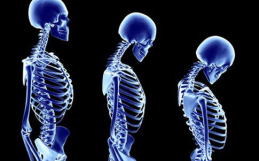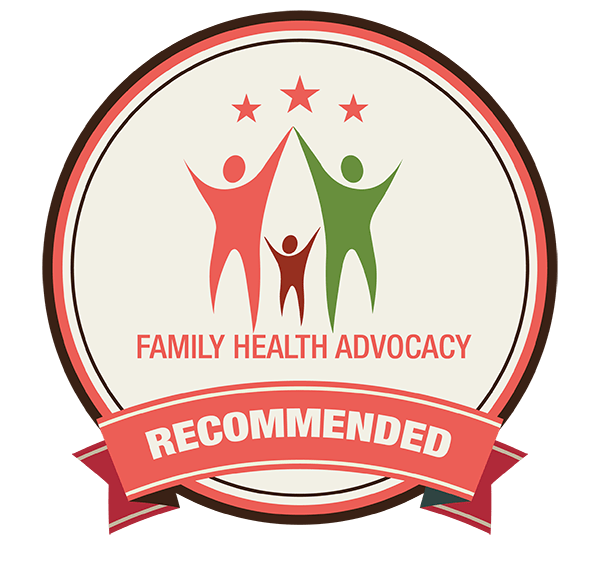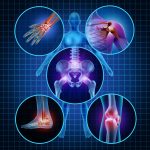Virtually every parent wants their child to be healthy and happy. Creating certain behaviors and habits early on can lead the path to health and longevity and can be one of the greatest gifts we can provide our kids. Here are 6 ways to build healthy superkids. *A little secret is that these habit and lifestyle modifications will help everyone but I also believe the earlier you start the better.
- Include healthy fats in their diet.
Let’s start with some basics such as why would fats be important for kids? Fats are a concentrated source of energy in the body. They help slow the absorption of carbohydrates and help us feel full longer. Our bodies cannot absorb fat-soluble vitamins like Vitamins A, D, E and K without fats. I am not recommending a high fat diet for kids but ensuring healthy fats are in the diet. In fact, I often recommend eating real food without labels and with a diversity of colours. It is much easier to decipher a food without a nutrition label such as fruits, vegetables, nuts, etc. than a processed and packaged product with a laundry list of ingredients requiring a PhD in nutrition.
“In our healthy eating obsessed world, parents may make the mistake of excluding fat in the young child’s diet, sacrificing it for more fruit, vegetables, and whole grains.
But, young children need fat to grow well. In fact, babies and young toddlers need almost half of their calories from fat, preferably monounsaturated and polyunsaturated fats, which help with brain growth and development.
And even older children still need around a third of their calories from a healthy fat source.”
Jill Castle, Childhood Nutrition Expert
What are some healthy fat options?
Avocados, pastured eggs, healthy oils, butter, fish, liver, seeds and nuts.
Avocados are a great source of healthy fats. There are many different ways to include them in your kids diet including
– Slice or cube and use as a topping for tacos or casseroles.
-Make guacamole and use as spread on sandwich/wraps or as dip.
-Mix into egg or tuna salad.
-Puree into smoothies or desserts
Whole eggs from hens that are preferably fed on pasture. Different options kids may like to consume include to fry, hard boil, scramble, skillet-style, Crepe-like-pancakes: personal family favourite my kids make is eggs with unflavoured grass-fed protein powder, topped with organic butter and cooked blueberries and strawberries for breakfast (or breakfast for dinner).
Is there a healthy oil?
Fats and oils have been vilified for many years (watch this) Although slightly controversial, after much research on this topic, oils, specifically olive, coconut and avocado oils are a great way to enhance flavour but also provided healthy fats in the diet of kids. Again eating the whole food which these oil are sourced from is important. The way these fats are extracted are important. Healthy fats are always cold-pressed or mechanically extracted and do not have chemicals added to eliminate odours or change colours. Often the containers they are placed in are dark and kept in cooler temperatures in order to reduce rancidity caused by temperature increases, exposure to oxygen and light.
Different options for consuming these oils include: steam and add preferred oil after they are cooked, healthy fat breakfast shake, use avocado oil for higher temperature cooking, extra virgin olive oil add 1-2 tablespoons to your salad or vegetables, use refined coconut oil for cooking (this is my favourite for ‘dippy or sunny-side eggs’).
Grass-fed butter. Read the benefits here and if your curious about the Diet-Heart Myth: cholesterol and saturated fat are not the enemy here.
– Melt butter and saute vegetables for main dishes and side dishes.
– Add to steamed vegetables while they are warm to increase nutrient absorption . – Add to soups or smoothies to make them creamier.
– Use to make healthy bars.
Omega 3 essential fats are not commonly found in a Western diet and are often added artificially. It’s best to get your omega-3s from whole, real food sources, especially wild-caught seafood.
Therefore, I recommend eating fish one to three times per week. The fish I recommend are (download my ebook for brands): Wild sockeye salmon, sardines, fish oil and/or Cod liver oil.
Flax seeds, chia seeds, hemp seeds and walnuts are also great option. Soaking and sprouting are good options to optimize digestion and bioavailability of seeds and nuts.
I also recommend eating liver 1 time per month as you would a medication or supplement that you cannot do without. Liver is one of the primary sources of fat-soluble Vitamin A. Eating classic liver and onions or liver pâté or a spoonful of lemon flavoured cod liver oil, are different ways to get liver or and Vitamin A (click link to read why its difficult to get Vitamin A from vegetables) into your diet.
The addition of healthy fats will replace some less desirable foods. There are several reasons why you may want to limit sugar and a simple or processed high carbohydrate diet.
- Hyper palatable (engineered) foods make it almost impossible for kids to crave healthier options
- Alter behaviour
- Create addictive tendencies
- Issues with obesity and habits for the future
- Inflammation
Two quick and easy recipes to get more health fats in your kids diet:
- Warm up 1 cup coconut oil (can also add cacao butter, butter) can use either refined (higher cooking temperature and no coconut flavour) or extra virgin.
- Add to ¼ cup of your favourite nut butter.
- Mix ‘dry ingredients’.
- Mix coconut oil and dry ingredients.
- Pour into parchment paper and pyrex dish.
- Place in freezer.
- Seconds as a shake base in the morning for breakfast
5 minute healthy fat Shake/Smoothie
- 2”x2” piece of ‘5 minute healthy fat bar’
- ½ cup frozen blueberries (or other berry)
- ½ avocado
- Carrot
- Water
- GF butter and or coconut oil
- Small handful of spinach
- Probiotics (optional)
- fish oil or cod liver oil
- Multivitamin(optional)
- Let kids get dirty with our community: soil and bacteria.
People have been eating dirt for thousands of years—until now. An obsession with germ-free homes and a sterile food system is leaving us craving dirt—more specifically, all of those beneficial soil-based organisms (SBOs) found in dirt.
Eat dirt really?
- If the concept of eating dirt seems gross to you, consider this: If you were to take away the water in our bodies, you’d be left with mostly dirt. That’s because we’re made of 60 of the most abundant elements in the Earth’s crust.
- Soil-based organisms or SBOs help improve your immune response while supporting gut health. Ignatius CSA
- Just as plants grow best in healthy soil, we need these organisms to live a long, healthy life.
- There are more than 800 studies referencing SBOs.
- Significant reduction in bugs with the increase of C-section (cesarean section) births and formula-fed babies.
- Antibiotics in personal care products, food and medication also reduce our natural bug flora.
What’s the deal with probiotics and prebiotics?
- Pro=good, biotic=bugs
- Prebiotics: feed the bugs; like fertilizer (greens, garlic, artichoke, onions, asparagus, bananas; raw more fibers preserved)
- Fermented vegetables (sauerkraut, kimchi, beets, natto) can have both pre and probiotics. These are also a great source of Vitamin K2. Vitamin K2 is difficult to find in a standard North American diet as it found only in grass-fed fats such as butter, cheeses, milk and creams, fermented vegetables)
- Yogurt, kefir will also have probiotics.
- Reduce personal care products. Do kids really have to ‘smell clean’?
- Antibiotic products; disrupt gut flora/microbiome
- What you put on your skin goes in
- EWG: SkinDeep.com cosmetic database
- Hormonal disruptors
- Buy organic or conventional? Read this What you don’t have to eat organic
- Nutritious movement and free play
- What is Vitamin N?
- Free play is the easiest way to include a variety of movement with your entire body. Unstructured playtime is essential for kids to build their imagination, relieve stress and simply be kids. Focus on natural movements and not sports: pushing, climbing, pulling, lifting, squatting, walking, running, swimming, etc. High volume sports create a very specific body for that particular sport at the risk of reducing the body’s ability to move in different ways. Consider nutritious movement allows the body to do anything and be a ‘generalist’. My inspiration is to become a ‘generalist’ via Ido Portal.
- Even the American Academy of Pediatrics states that free, unstructured play is essential for children to manage stress and become resilient, as well as reach social, emotional and cognitive development milestones. Tag anyone? (Tag is excellent for structural and neuromuscular development).
We also need to reduce ‘sticky spots’/immobility and weaknesses from captivity (being sedentary and prolonged sitting). Lack of nutritious movement would include forward head posture that is now so common in kids. What’s the problem?
- Forward head posture means that your head is in front of your spine. This is not normal but very common in the modern world.
- see Should kids be sitting or standing?
- Often kids have an abnormal reversed curve/’text neck’ associated with chronic neck pain and headaches
- Massive increase seen in kids; never been seen before; technology to blame?
- Neck pain will not go away by itself and will be a lifelong problem if not addressed.
- What’s the solution? Get your kids’ spinal alignment and posture checked and follow your doctor’s recommendations for corrective exercises and stretches.
- Let kids have bare feet as much as possible. Why? The foot was designed to be very resilient and support your body. When we place the foot in a shoe we are casting the foot in the shoe’s shape and weakening the foot. Adding a rigid sole, a high heel and a narrow toe box changes the way the foot can support the body. Read this and watch this to go down a bit of the rabbit hole.













